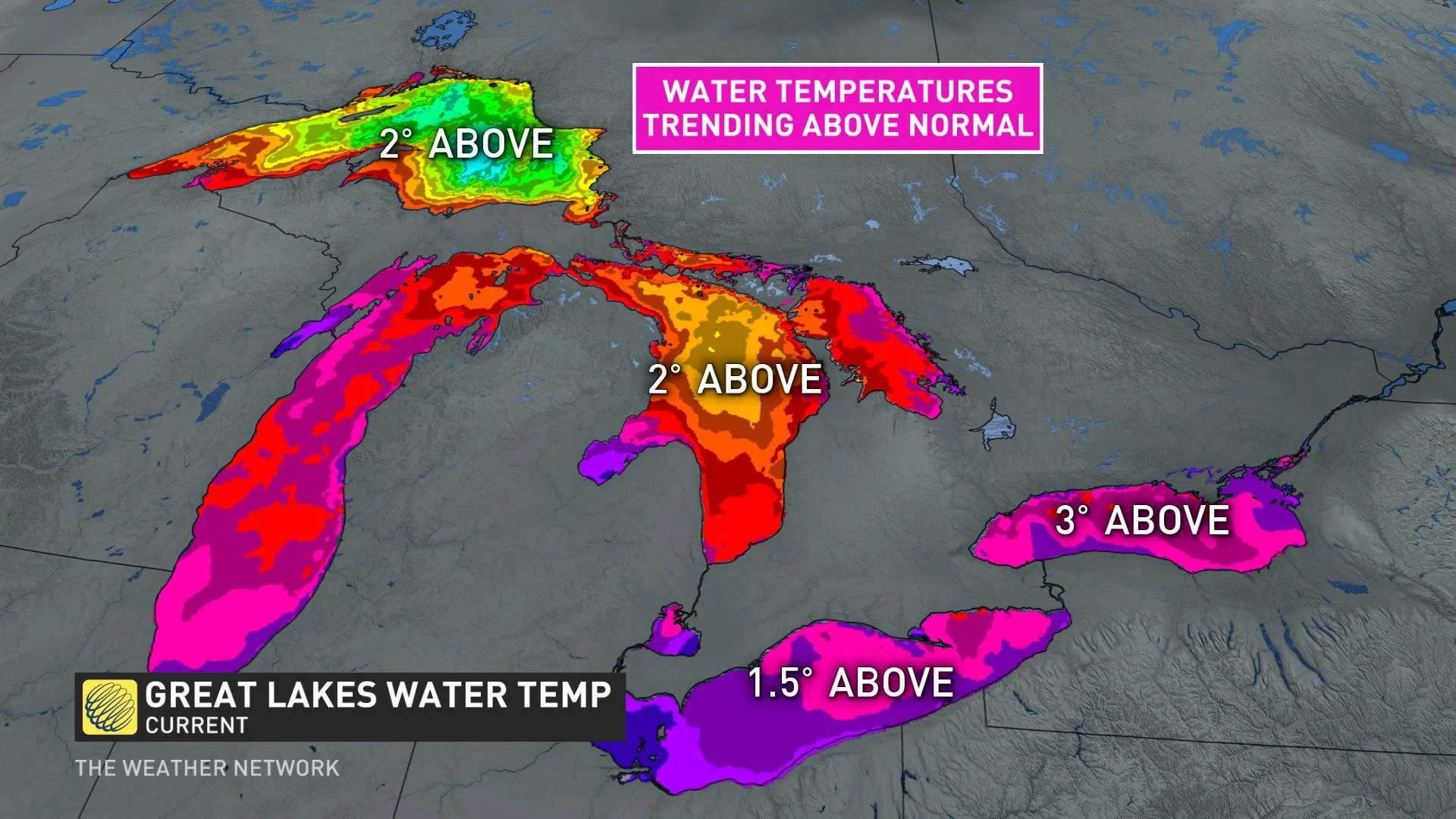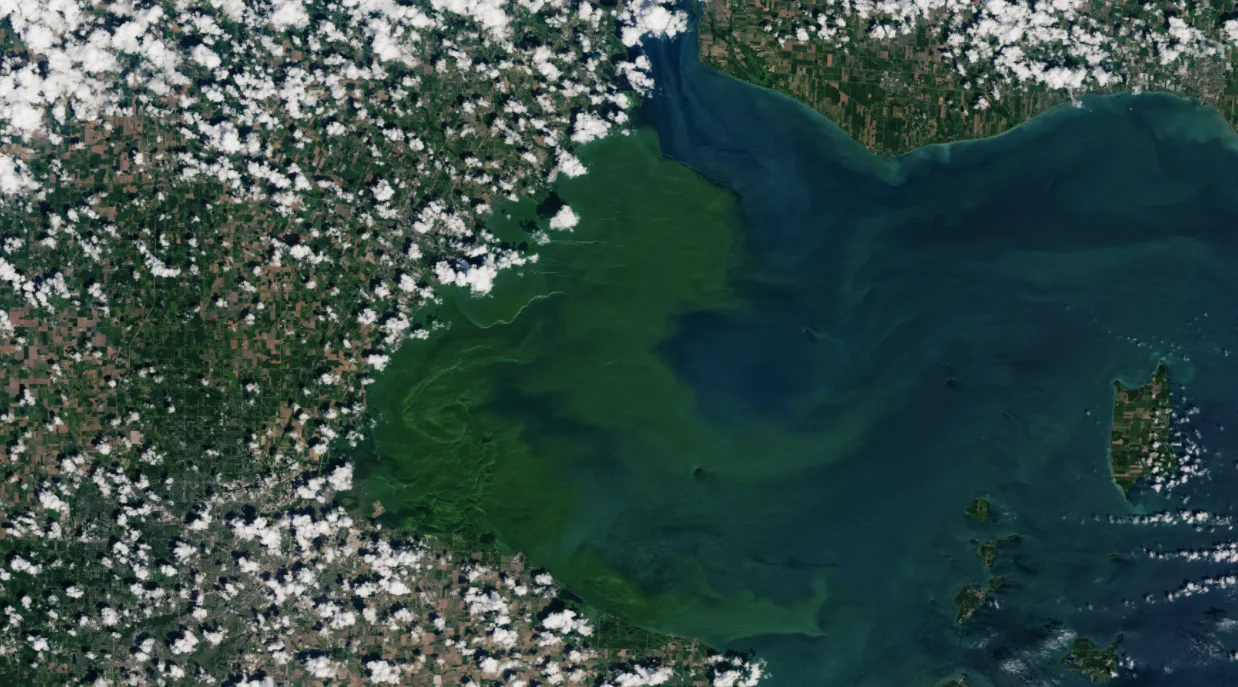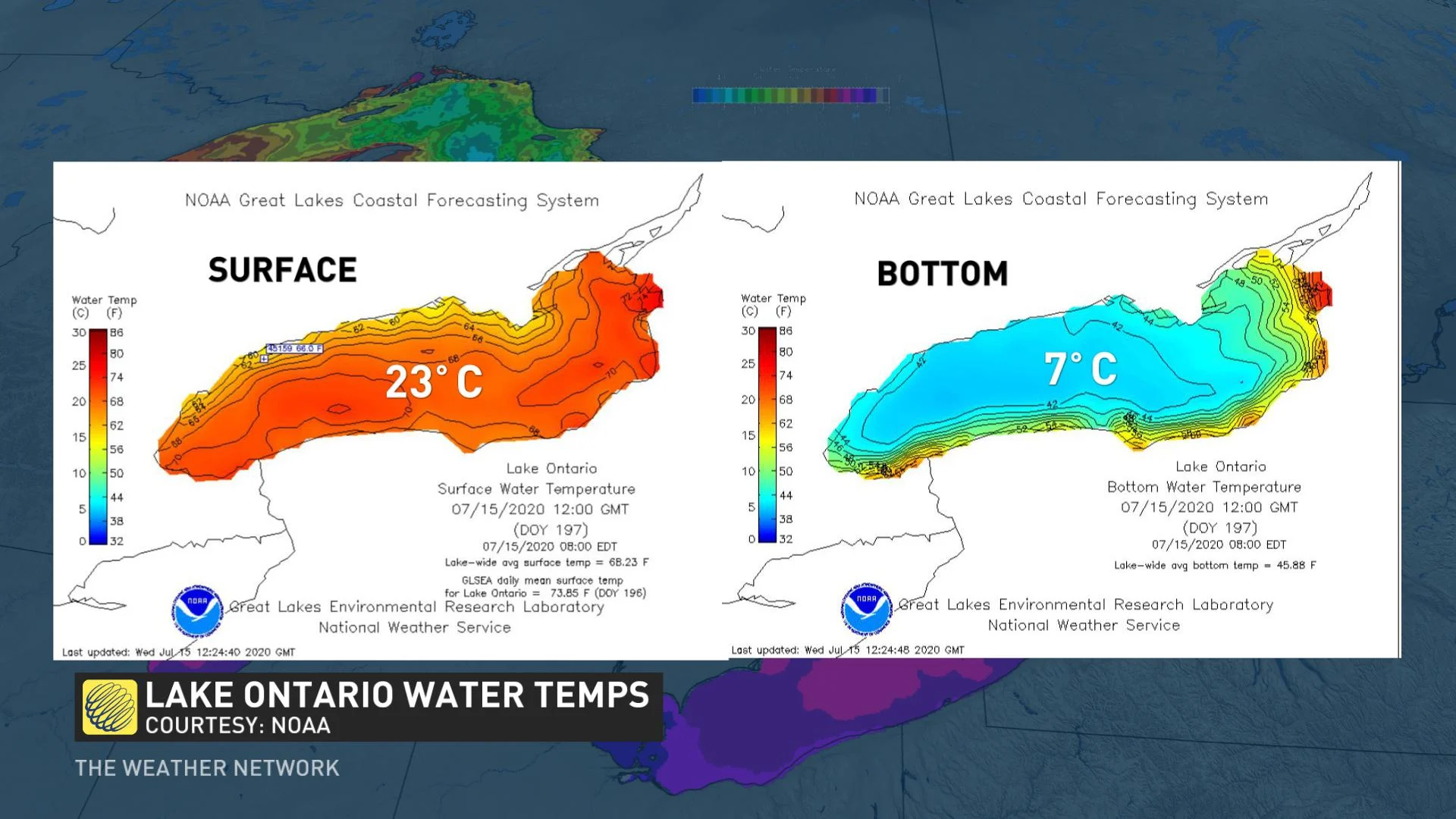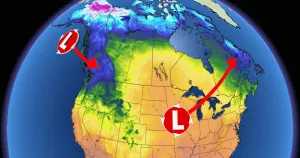
All five Great Lakes are currently trending warmer than normal
Aside from a more pleasant experience for swimmers, the warmer waters' effects reach well past the summer, with impactful consequences.
With prolonged stretches of at-times extreme heat, nobody would deny it's been hotter than normal in southern Ontario -- and warmth extends to the waters of the Great Lakes.
The week of July 6-10th in particular featured one of the greatest anomalies so far this season, with temperatures trending 5-10 degrees above normal. And while surface water temperatures have subsided slightly since, they are still generally trending 2-3 degrees above normal.

So what does this mean for us? Believe it or not, lake water temperatures can have an impact on us many months down the road, but we'll start with the short-range impacts:
The most obvious, and welcome, will be more comfortable temperatures for swimming. However, the trade-off will be warmer lake breezes, which are normally a source of relief from hot temperatures for people who live near the water.
Perhaps more damaging, warmer temperatures are ideal for harmful cyanobacteria to thrive, meaning a greater risk of fungal algal blooms, particularly in western Lake Erie.

Warmer lakewater temperatures increase the likelihood of harmful algal blooms, like this one depicted in western Lake Erie in July 2019. Image: NASA Earth Observatory.
"Such blooms may result in higher costs for cities and local governments that need to treat drinking water, prevent people from enjoying fishing, swimming, boating and visiting the shoreline, and harm the region’s vital summer economy," says the U.S. National Oceanic and Atmospheric Administration, which is predicting a moderately harmful bloom this summer. "These effects will vary in location and severity due to winds that may concentrate or dissipate the bloom."
It's important to remember, these above normal lake water temperatures are only located in a narrow layer near the water surface. Water temperatures at the bottom of the lakes are much colder. It only takes a stretch of cooler or stormy weather to mix up this layer and allow temperatures to trend back to normal.

However, if we do see atmospheric patterns remain warmer than normal across the Great Lakes, and water temperatures continue to trend above normal, we will also have to watch for long range impacts reaching well beyond the summer.
In the fall, the open waters will be comparatively warmer than the air above them, which will translate into more intense storm systems. Waterspouts could also become more frequent during the fall season with this more dramatic temperature contrast
As winter nears, it will delay the first frost along the shorelines, but more seriously, it will take the lakes' surfaces longer to freeze over. When late fall storms arrive, cold winds blowing over them will precipitate much of their moisture as lake-effect rain showers or snow -- bringing sometimes intense amounts to the traditional snow belt areas.
With files from Kelly Sonnenburg.










